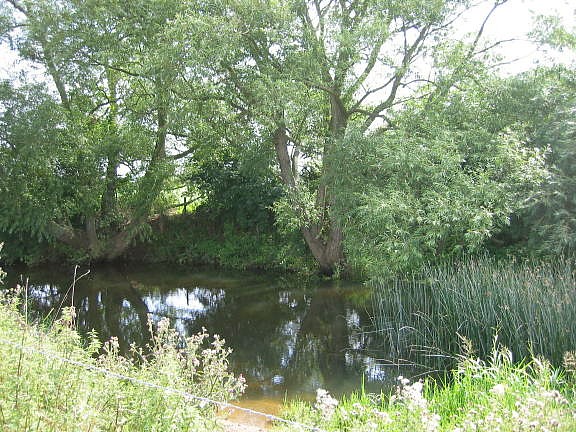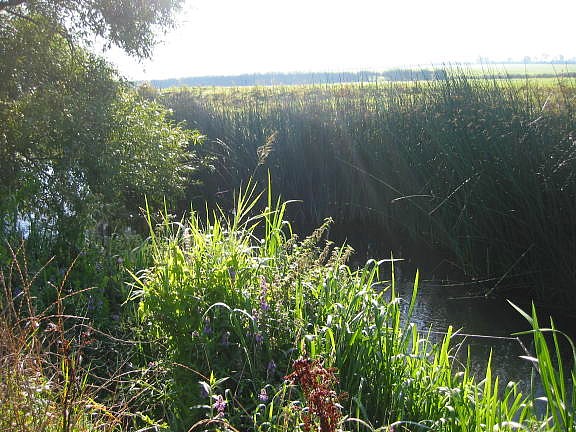Chub Fishing
Article,
By
Chevin .
Chub. The most
fearfullest of fishes.
About
the Author: Chevin
now lives in Australia where he concentrates on catching big fish -
mainly saltwater species which include sharks up to an estimated
1200lb. During the '60s and early '70s, Chevin was a
very keen chub angler but he did a lot of bream fishing too. In
1976 , with a friend, he shared the best bag of bream recorded
in England. The bag consisted of 46 fish for a total weight of 373lbs. Chevin
also holds the current National record for the Monkeyfish
Inornate caught in 1986.
When speaking
of the chub, Isaac Walton described it as being the most fearfullest of
fishes and in that he was absolutely right.
However, the chub also has a voracious appetite and as long as it
is remembered that they are easily scared and precautions are taken to
avoid scaring them, they can be caught with reasonable frequency.
Chub are found
in many situations along a river, but it is quite easy to identify the
most likely swims they will inhabit.
For example, chub love to have cover above them and so if you
find a tree over hanging a
deep run or pool, you will almost certainly find at least one chub in
that situation. Very often a
direct cast to where the chub is likely to be will be impossible and so
it is necessary to devise other ways of getting a bait to them.
My favourite way is to sit a little distance up stream on the
same bank as the swim and make a cast with as little weight as is
necessary on my line to a point about midway along where I expect the
chub to be. I then allow the
current to roll my bait to where I want it and then wait for a bite.
If there is more than one chub there, the bite might be almost
immediate as the smaller ones rush to take the bait, but if there is
only one big one there the bite could be immediate or it might be a
little time in coming. It is
essential to keep hold of the rod though, because sometimes you get very
little time to strike; chub rarely commit suicide.
Of course, on occasions it might be easier or better to float
fish the swim and as long as the cover allows it, a bait trotted through
the swim might well bring about the desired results.
On a nice summer evening even a piece of bread crust just free
lined down the current will often pay dividends.
Chub will take most baits that anglers offer them, as long as
they havenít been scared so the approach to the swim must always be
stealthy, perhaps even on hands and knees while remembering to stay off
the sky line.

Chub also love well oxygenated water especially
in the warmer weather and so a weir pool or spill way can be an
excellent place to find them. There
are two good ways of fishing these places, either with an upstream
ledger or a rolling ledger. To
use the upstream ledger method, you should position yourself downstream
but within casting reach of the turbulent water.
Just enough lead should be used on a link ledger to hold bottom
and you tighten up to it.
I used to use a single rod rest and have the rod tip quite high
for this type of fishing , not only does it keep as much line as
possible out of the water and the current, it also makes it very easy to
see the bites. If you have
judged the weight of your ledger correctly, you will be able to tighten
the line to the rod tip and bites will be indicated by the line suddenly
falling slack. Initially you
will have a few false alarms, but you will soon be able to differentiate
between them and real bites. If
you are certain that it is
just a matter of the ledger shifting, just retighten and continue
waiting. If you are unsure
as to whether it is a bite or just movement, strike; better safe than
sorry! If there are barbel
in the water then you might pick up those as well, both fish like
similar conditions and take the same baits.
 To roll a
ledger you need to position yourself fairly close to the weir and cast
across the turbulent water. Again
you need to use a link ledger adjusted so that the pressure of the current
on your line just moves your ledger and bait across the bottom.
You might have to take up slack line from time to time and to keep
in touch with what is happening, you need to hold your rod and touch
ledger all of the time. As
with all chub fishing, stealth and concealment are of paramount
importance. Unless you are
very careful a chub will normally see you before you see the chub and once
it does see you or feel the vibration of foot steps on the bank it will
not be there for you to see.
Some of the most enjoyable chub fishing is in narrow and heavily weeded
stretches of river where you can creep along the bank, spot your chub and
cast a bait to them. This
really does involve creepy crawly tactics, often on stomach and elbows
just parting river side growth to see into the water.
Runs between banks of bulrushes and the bank are my favourite
places and very often as you peer into the water, you will see chub
drifting across the run intercepting anything edible that is being carried
to them. Sometimes you can
fish for them from where you spot them, but more often you will have to
work out a plan of approach, possibly preparing access that allows you to
fish for them while remaining concealed on another day.

As I mentioned
earlier, chub are voracious feeders and they will take a wide variety of
baits many of which can be found on the banks of a river.
Black slugs are an excellent bait though they are revolting
things to pick up. A pair of
plastic tongs is fine for that job and will save you from having fingers
that will remain sticky all day. Worms
are good, as are frogs, though I have to say I really donít care to
use frogs myself, I like them too much.
I used to catch a lot of chub on crayfish, though I believe that
in some river systems they are no longer allowed as bait.
Bread is always a good bait as is cheese and my favourite cheese
for them was Kraftís Velveeta. I
donít know if it is still available in the
UK
Ė or anywhere else for that matter.
(The last time I saw some was in Maine US in 1999; I bought some,
and fished with it in the Moose Head River and caught a chub on it with
my first cast!)
If you can
approach chub under an over hanging bank or branch it can be worth
dapping a large grasshopper or anything else big enough to put on a
hook.
While chub can
be caught throughout the day, early morning and late evening are the
better times during the summer. They
will feed throughout the day in the winter, but on those mild drizzly
winter days, I used to love the first couple of hours of darkness.
Voracious they
might be, but chub always learn quickly and once you have caught a few
on the same method in one small area, you might need to change baits or
methods to maintain your success rate.
I remember a stretch of the
Avon
I fished many years ago where I employed creepy crawly tactics casting
worms to chub that I could see. I
caught nineteen of them in about three hours and didnít have a camera
with me. I went back the
next day with a camera, saw the chub, cast my worm to them and failed to
catch any at all.
Tackle for chub
can vary but it is a mistake to go any lighter than necessary.
Chub are powerful fighters and there is no point in fishing too
light and leaving fish with hooks in their mouths and line trailing
behind them. In the heavily
weeded swims I used a carp rod with a one and a half pound test curve
and eight pound line. In
open water I would use a lighter rod with six pound line.
Donít be afraid to use large hooks if you are using large
baits. I frequently used No
4 and No 2 hooks.
Chub fishing
can be hard and frustrating work, but there are few lovelier fish to
look at when you have them in your net.
|